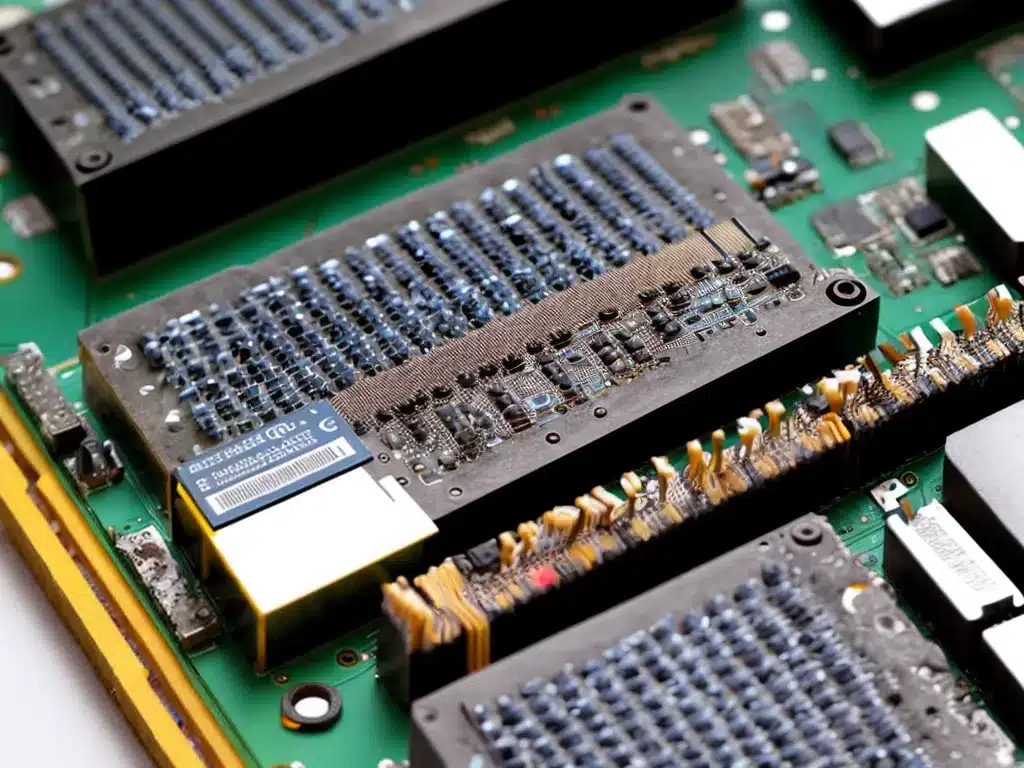
Introduction
Random Access Memory (RAM) modules are an essential component in computers that temporarily store data while the computer is running. Over time, RAM can deteriorate and cause various issues such as random crashes, freezes, and slow performance. When this happens, testing and replacing faulty RAM modules is necessary to restore optimal computer functionality. This article will provide a step-by-step guide on how I test and replace faulty RAM in my personal computer.
Requirements
Before starting, you’ll need the following items:
- Phillips head screwdriver
- Anti-static wrist strap
- Replacement RAM modules
- Computer tool kit (optional)
It’s also important to:
- Back up any important data in case anything goes wrong during the RAM replacement process.
- Review your computer manual to understand how to safely open up your machine and locate the RAM slots.
Testing RAM for Errors
Here is how I test my RAM modules to determine if any are faulty and causing issues:
1. Run Memory Diagnostic Tool
-
I start by running the built-in Windows Memory Diagnostic tool. This scans the RAM and checks for any errors.
-
To access this, I search for “Windows Memory Diagnostic” on my computer, select “Restart now and check for problems”, and let the test run.
2. Check Task Manager
-
I also open the Task Manager in Windows and check the performance tab to see if the RAM usage looks abnormal.
-
Spiking RAM usage can indicate a faulty module.
3. Use Third-Party Tools
-
For a more thorough RAM test, I use free tools like Memtest86 which provides advanced memory diagnostics and error reporting.
-
I boot my computer from a Memtest86 USB drive and let it extensively test each RAM module.
4. Elimination Process
-
If the above tests reveal RAM errors, I remove all but one module and rerun the tests to isolate which specific module is bad.
-
This elimination process confirms which RAM stick needs to be replaced.
Safely Replacing RAM
Once I’ve confirmed the faulty RAM module, here are the steps I follow to safely replace it:
1. Open Computer and Discharge Static
-
I first shut down and unplug my computer. Then, I open up the case to access the RAM slots.
-
I make sure to discharge any static electricity by touching a metal part of the case interior before touching any components.
2. Locate and Remove Faulty RAM
- Consulting the computer manual, I locate the faulty RAM stick in its slot. I release the latch securing the module and gently pull it out.
3. Install New RAM
-
I line up the notch on the new compatible RAM module with the slot and gently push it into place until it clicks.
-
It’s important to be gentle and avoid forcing anything to prevent damage.
4. Close Computer and Boot Up
-
With the new RAM installed, I close up the computer case and plug it back in.
-
When I turn the computer back on, I check that the new RAM is recognized by the system correctly.
-
I also rerun any diagnostic tests to confirm the issues are resolved.
Verifying Problem is Fixed
To be sure replacing the RAM has fixed any system issues, I verify performance and stability by:
-
Running memory test tools again to confirm no more errors.
-
Monitoring task manager performance with typical workloads.
-
Using the computer normally for a few days to check for any further crashes or issues.
-
Running intensive applications like games that utilize a lot of RAM.
If the computer is now operating normally without any further issues, then the RAM replacement was likely successful.
Conclusion
With the right preparation and steps, testing and replacing faulty RAM is a process most computer users can tackle on their own. Paying close attention to diagnostic tool results helps identify issues, while following proper static discharge and hardware procedures prevents any damage. Remember to always consult your computer’s manual for model-specific directions. With some patience and care, you can swap out the bad RAM and have your computer running smoothly again.












